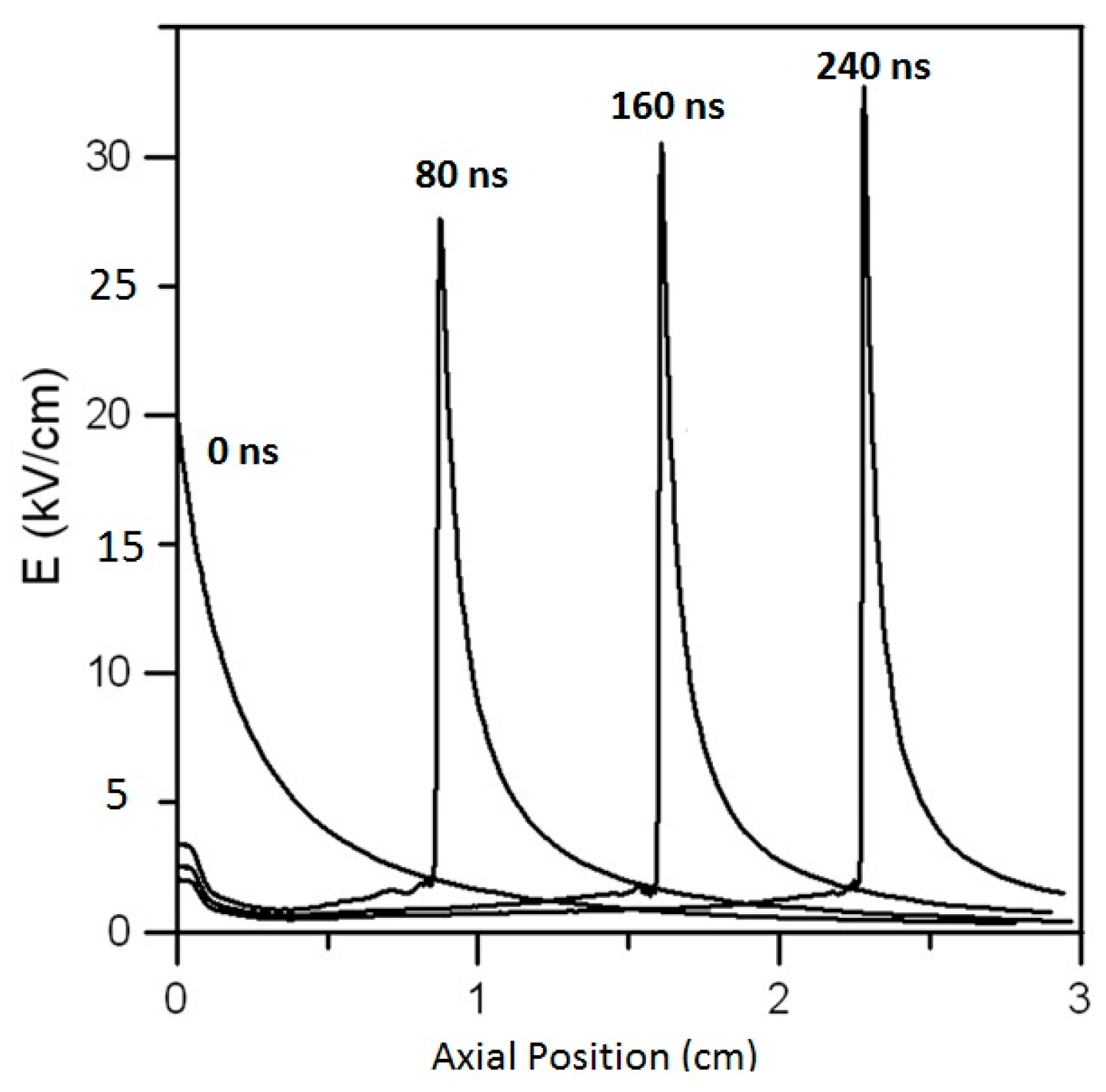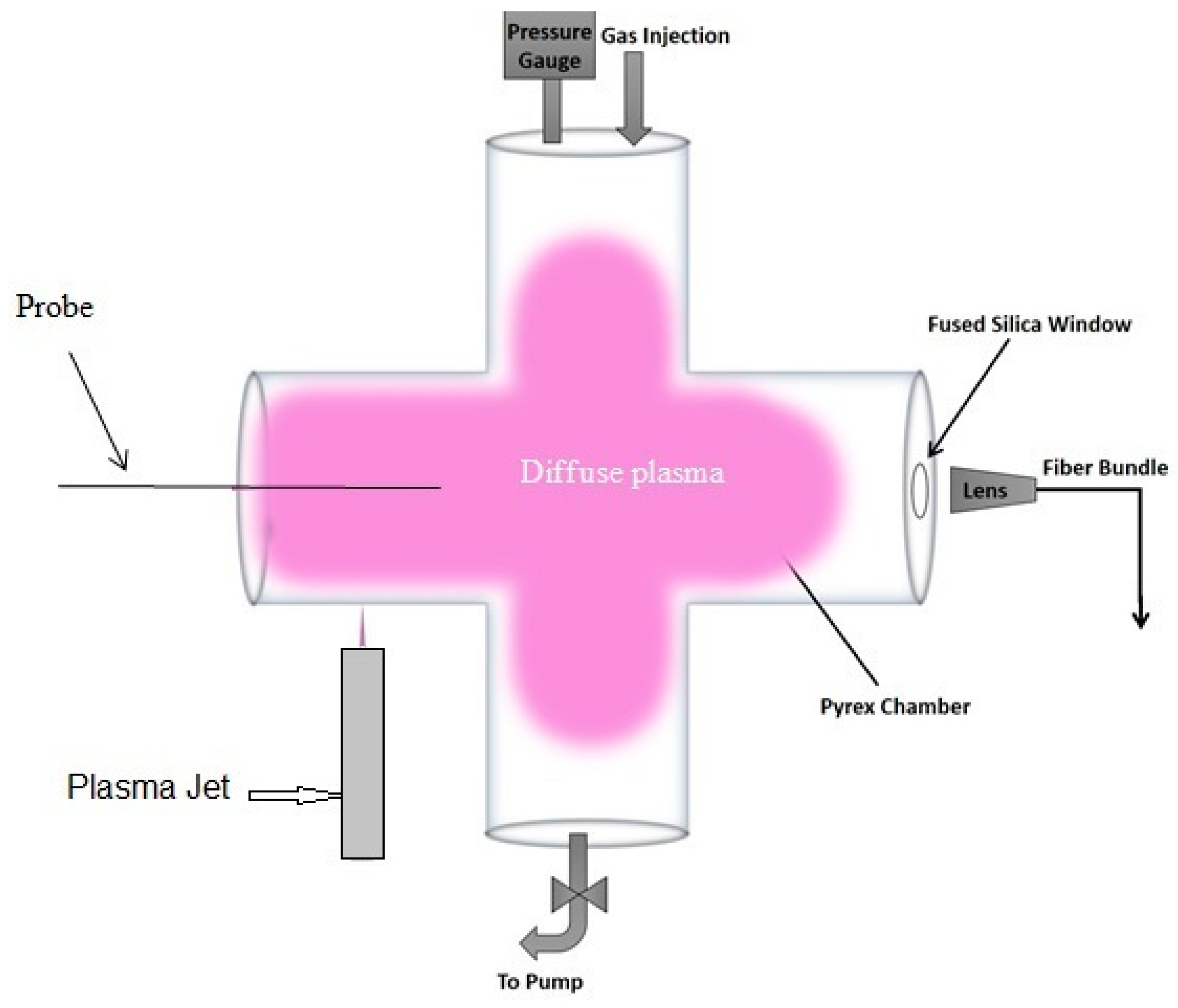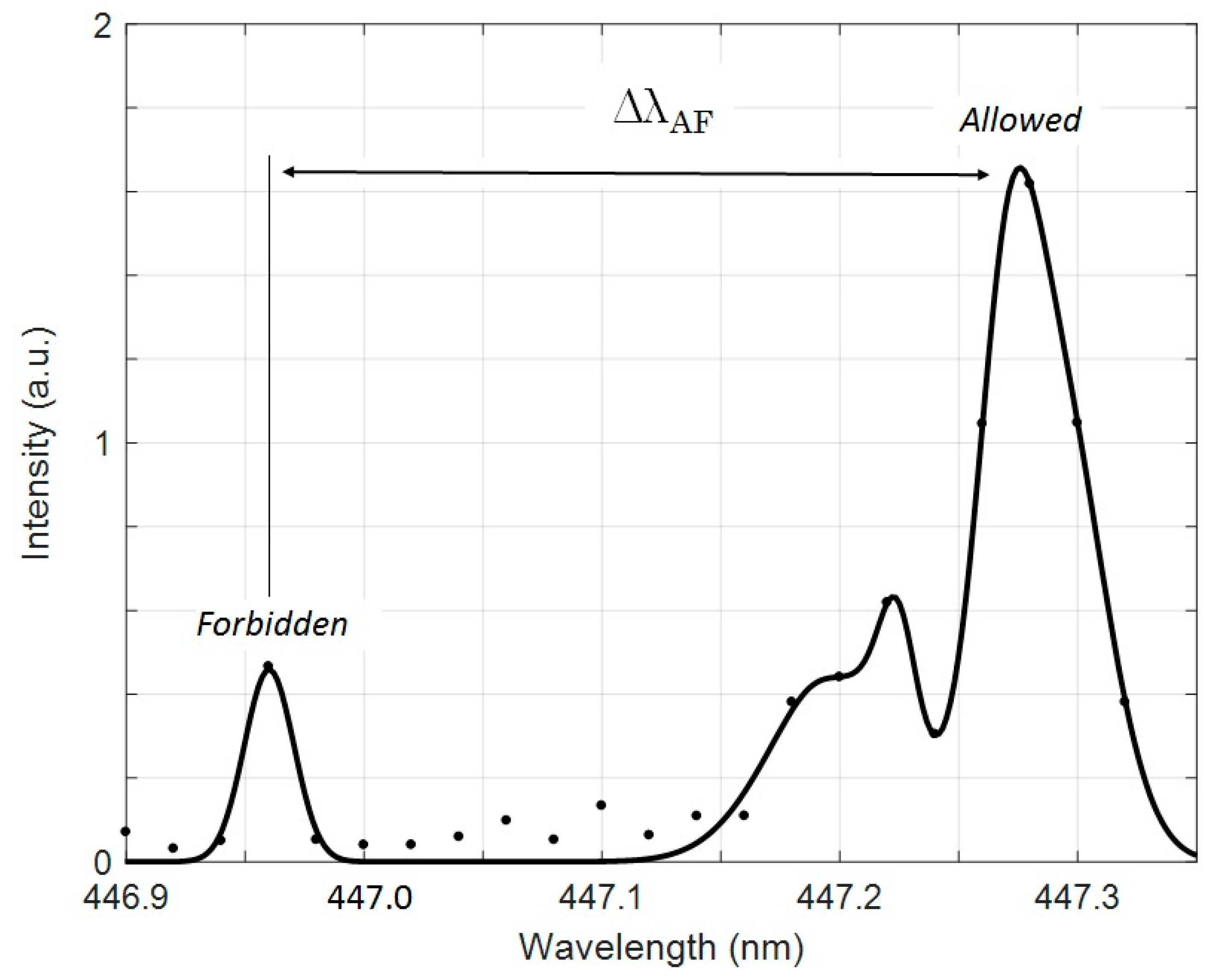Ignition of A Plasma Discharge Inside An Electrodeless Chamber: Methods and Characteristics
Abstract
:1. Introduction
2. Materials and Methods
3. Results and Discussion
3.1. Measurement of the Deposited Charge
3.2. Measurement of the Transmitted Electric Field
3.3. Measurement of the Electrons Density and Temperature
3.4. Dynamics of the Plasma Ignition Inside the Chamber
4. Conclusions
Conflicts of Interest
References
- Begum, A.; Laroussi, M.; Pervez, M.R. Atmospheric pressure helium/air plasma jet: Breakdown processes and propagation phenomenon. AIP Adv. 2013, 3, 062117. [Google Scholar] [CrossRef]
- Sobota, A.; Guaitella, O.; Garcia-Caurel, E. Experimentally obtained values of electric field of an atmospheric pressure plasma jet impinging on a dielectric surface. J. Phys. D Appl. Phys. 2013, 46, 37. [Google Scholar] [CrossRef]
- Stretenovic, G.B.; Krstic, I.B.; Kovacevic, V.V.; Obradovic, A.M.; Kuraica, M.M. Spatio-temporally resolved electric field measurements in helium plasma jet. J. Phys. D Appl. Phys. 2014, 47, 10. [Google Scholar]
- Robert, E.; Darny, T.; Dozias, S.; Iseni, S.; Pouvesle, J.-M. New insights on the propagation of pulsed atmospheric plasma streams: From single jet to multi jet arrays. Phys. Plasmas 2015, 22, 122007. [Google Scholar] [CrossRef]
- Naidis, G.V. Modeling of Streamer Propagation in Atmospheric Pressure Helium Plasma Jets. J. Phys. D Appl. Phys. 2010, 43, 40. [Google Scholar] [CrossRef]
- Lu, X.; Xiong, Q.; Xiong, Z.; Hu, J.; Zhou, F.; Gong, W.; Xian, Y.; Zou, C.; Tang, Z.; Jiang, Z.; et al. Propagation of an atmospheric pressure plasma plume. J. Appl. Phys. 2009, 105, 043304. [Google Scholar] [CrossRef]
- Xiong, Z.; Robert, E.; Sarron, V.; Pouvesle, J.-M.; Kushner, M.J. Atmospheric-pressure plasma transfer across dielectric channels and tubes. J. Phys. D Appl. Phys. 2013, 46, 15. [Google Scholar] [CrossRef]
- Guaitella, O.; Sobota, A. The impingement of a kHz helium atmospheric pressure plasma jet on a dielectric surface. J. Phys. D Appl. Phys. 2015, 48, 25. [Google Scholar] [CrossRef]
- Laroussi, M.; Razavi, H. Indirect Generation of a Large Volume Diffuse Plasma by an Ionization Wave from a Plasma Jet. IEEE Trans. Plasma Sci. 2015, 43, 2226–2229. [Google Scholar] [CrossRef]
- Lu, X.; Naidis, G.V.; Laroussi, M.; Ostrikov, K. Guided Ionization Waves: Theory and Experiments. Phys. Rep. 2014, 540, 123–166. [Google Scholar] [CrossRef]
- Razavi, H.; Laroussi, M. Diagnostics of Diffuse Large Volume Plasma Generated by an External Ionization Waves. In Proceedings of the Gaseous Electronics Conference, Pittsburg, PA, USA, 6–10 November 2017; p. 42. [Google Scholar]
- Kuraica, M.M.; Konjevic, N. Electric field measurement in the cathode fall region of a glow discharge in helium. Appl. Phys. Lett. 1997, 70, 1521. [Google Scholar] [CrossRef]
- Lu, Y.; Wu, S.; Cheng, W.; Lu, X. Electric field measurements in an atmospheric-pressure microplasma jet using Stark polarization emission spectroscopy of helium atom. Eur. Phys. J. Spec. Top. 2017, 226, 2979–2989. [Google Scholar] [CrossRef]









© 2019 by the author. Licensee MDPI, Basel, Switzerland. This article is an open access article distributed under the terms and conditions of the Creative Commons Attribution (CC BY) license (http://creativecommons.org/licenses/by/4.0/).
Share and Cite
Laroussi, M. Ignition of A Plasma Discharge Inside An Electrodeless Chamber: Methods and Characteristics. Plasma 2019, 2, 380-386. https://doi.org/10.3390/plasma2040030
Laroussi M. Ignition of A Plasma Discharge Inside An Electrodeless Chamber: Methods and Characteristics. Plasma. 2019; 2(4):380-386. https://doi.org/10.3390/plasma2040030
Chicago/Turabian StyleLaroussi, Mounir. 2019. "Ignition of A Plasma Discharge Inside An Electrodeless Chamber: Methods and Characteristics" Plasma 2, no. 4: 380-386. https://doi.org/10.3390/plasma2040030
APA StyleLaroussi, M. (2019). Ignition of A Plasma Discharge Inside An Electrodeless Chamber: Methods and Characteristics. Plasma, 2(4), 380-386. https://doi.org/10.3390/plasma2040030



